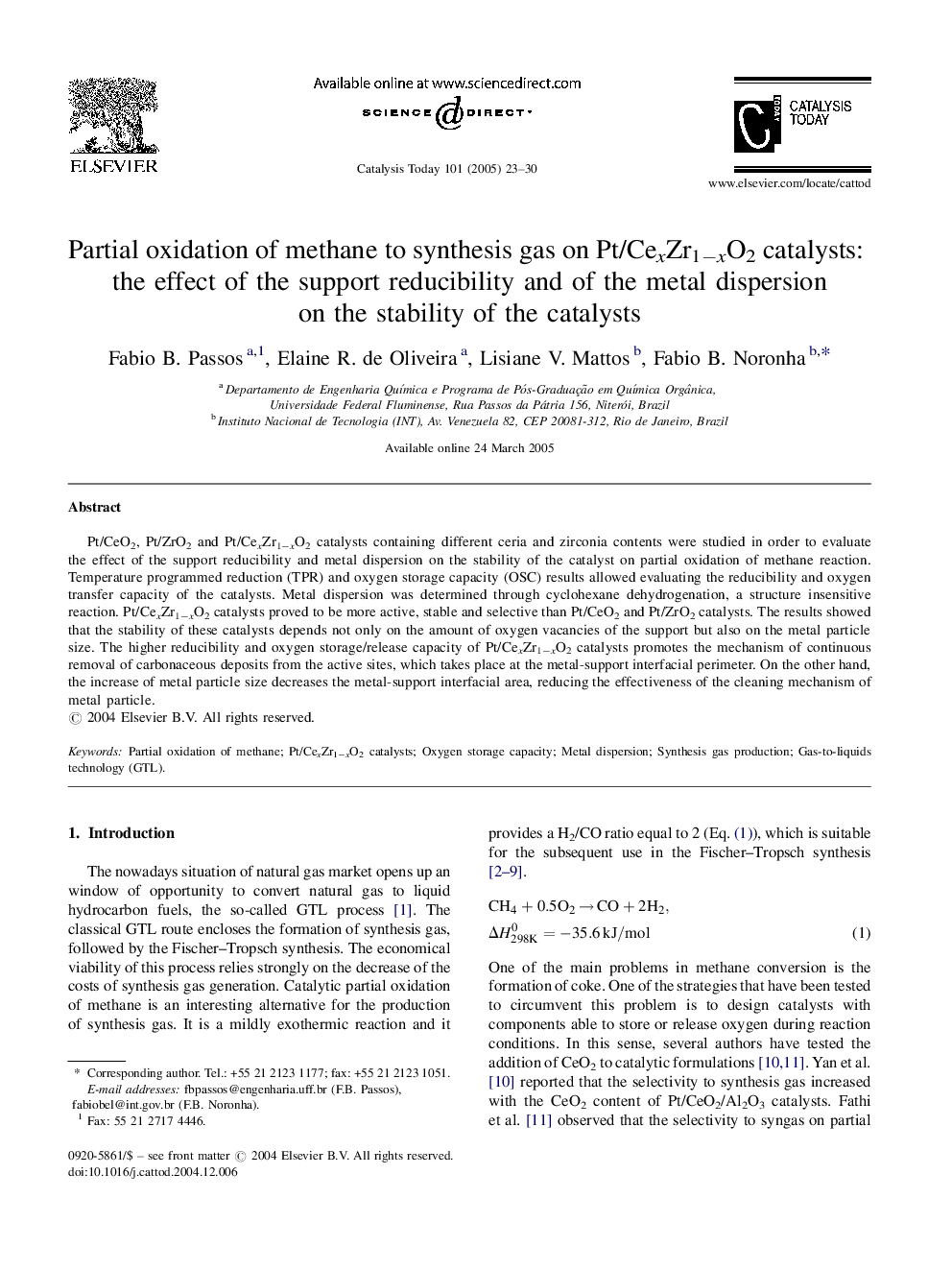| Article ID | Journal | Published Year | Pages | File Type |
|---|---|---|---|---|
| 10244062 | Catalysis Today | 2005 | 8 Pages |
Abstract
Pt/CeO2, Pt/ZrO2 and Pt/CexZr1âxO2 catalysts containing different ceria and zirconia contents were studied in order to evaluate the effect of the support reducibility and metal dispersion on the stability of the catalyst on partial oxidation of methane reaction. Temperature programmed reduction (TPR) and oxygen storage capacity (OSC) results allowed evaluating the reducibility and oxygen transfer capacity of the catalysts. Metal dispersion was determined through cyclohexane dehydrogenation, a structure insensitive reaction. Pt/CexZr1âxO2 catalysts proved to be more active, stable and selective than Pt/CeO2 and Pt/ZrO2 catalysts. The results showed that the stability of these catalysts depends not only on the amount of oxygen vacancies of the support but also on the metal particle size. The higher reducibility and oxygen storage/release capacity of Pt/CexZr1âxO2 catalysts promotes the mechanism of continuous removal of carbonaceous deposits from the active sites, which takes place at the metal-support interfacial perimeter. On the other hand, the increase of metal particle size decreases the metal-support interfacial area, reducing the effectiveness of the cleaning mechanism of metal particle.
Keywords
Related Topics
Physical Sciences and Engineering
Chemical Engineering
Catalysis
Authors
Fabio B. Passos, Elaine R. de Oliveira, Lisiane V. Mattos, Fabio B. Noronha,
